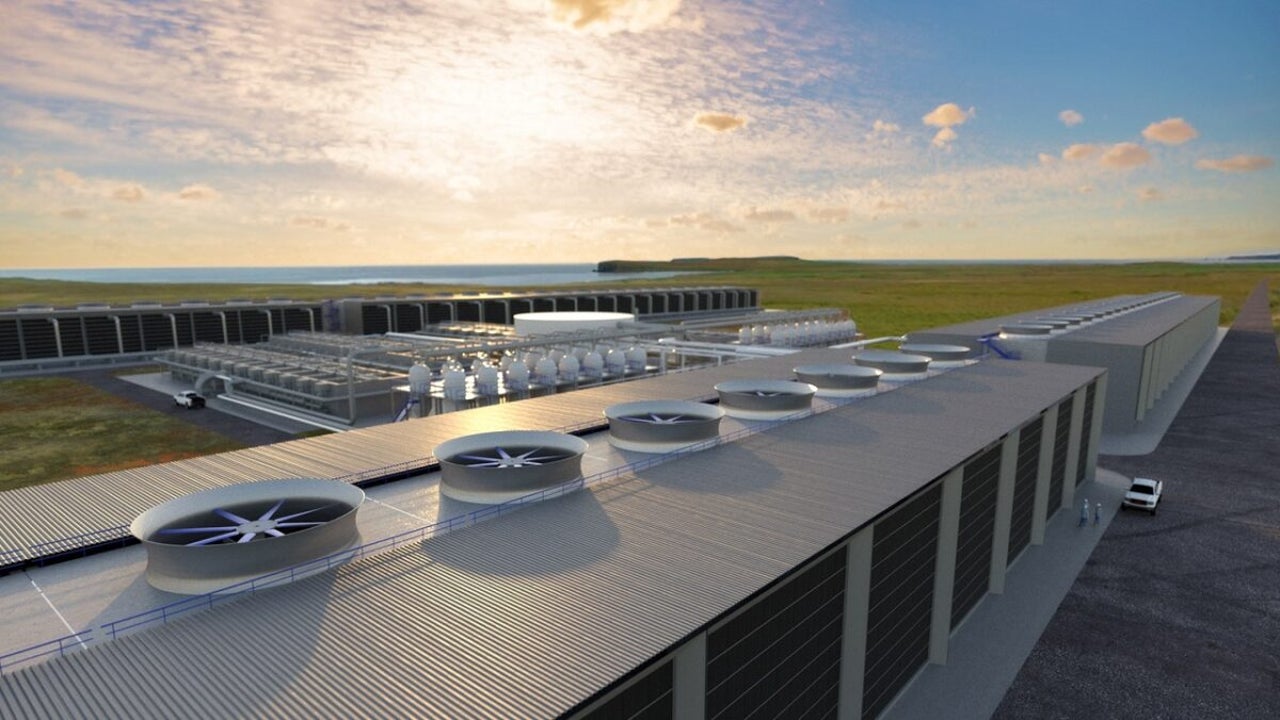News
Why is Texas building the world’s largest carbon dioxide capture facility?
It's a measure aimed at ending climate change.

- September 16, 2023
- Updated: March 7, 2024 at 2:32 PM

We don’t know exactly how to address climate change. Or rather, we don’t know which measures are the most feasible and the most effective in terms of curbing the rise in temperatures. In the United States, they are going to try a controversial measure… but one that could be very useful.
In the dry and arid state of Texas, the world’s largest project to remove excess carbon dioxide (CO2) from the atmosphere is being developed, a mission considered essential to avert a climate catastrophe.
The project has received funding from the Biden administration, although its critics label it as a distraction supported by the fossil fuel industry.
What are CO₂ capturers
Supporters of installing massive fans to suck large amounts of air and extract the carbon that heats the planet, a process called Direct Air Capture (DAC), take pride in the fact that this measure can mitigate global warming.
In June, in Texas, a $1 billion project called Stratos was launched, with the goal of removing 500,000 tons of CO2 from the atmosphere annually once it is fully operational by 2025.
Lori Guetre, Vice President of Carbon Engineering, the Canadian company leading Stratos, likened the arrival of this 26-acre site to the Apollo 13 moon mission during the groundbreaking ceremony.
This milestone was followed in August by the announcement from the Department of Energy that two facilities would receive $1.2 billion to serve as “centers” for DAC and help boost the carbon removal industry in the United States, while purging over 2 million tons of CO2 from the atmosphere between them.
But there are critics who see the measure as an unnecessary smoke screen
But some climate advocates have argued that DAC is, at best, a costly irrelevance compared to the more pressing need to reduce emissions and, at worst, a cynical ploy by the fossil fuel industry to maintain its polluting status quo.
The Stratos project ultimately belongs to Occidental Petroleum, a U.S. oil company that acquired Carbon Engineering for $1.1 billion last month and sees carbon removal as a kind of insurance for its industry’s future.
While Occidental maintains that the captured CO2 in Texas will be stored underground and used as a kind of carbon credit system for other companies to purchase, the company also touts itself as an example of what it calls “net-zero oil,” where extracted CO2 is injected into rock formations to displace gas and oil for subsequent extraction.
It is almost impossible to completely eliminate the dioxide we emit
Currently, there is a huge gap between the amount of carbon that scientists estimate needs to be removed from the atmosphere to prevent dangerous thresholds of global warming and the actual amount of carbon being removed, or even planned to be removed.
Human activity, primarily through the combustion of coal, oil, and gas, produces about 36 billion tons of CO2 emissions per year.
Since emissions have continued to rise in recent years despite urgent warnings of an ongoing climate crisis, there is little chance of achieving the rapid and massive cuts needed – up to half this decade – to avoid a severe escalation of heatwaves, floods, droughts, and other impacts.
For example, the United States would need to build 800 plants like the one in Texas in the coming years to achieve the country’s goal of net-zero emissions by 2050. It doesn’t seem like an achievable goal.
Journalist specialized in technology, entertainment and video games. Writing about what I'm passionate about (gadgets, games and movies) allows me to stay sane and wake up with a smile on my face when the alarm clock goes off. PS: this is not true 100% of the time.
Latest from Chema Carvajal Sarabia
You may also like
 News
NewsWhat is the law against online anonymity proposed by Switzerland
Read more
 News
NewsResearchers propose a more human approach to evaluating AIs
Read more
 News
NewsLibreOffice joins the Windows 10 farewell party with its new campaign: Go Linux, not Windows 11
Read more
 News
NewsLive Activities are much better in iOS 26: These are the changes
Read more
 News
NewsThe Rise of Handheld Gaming: Microsoft Takes Inspiration from SteamOS
Read more
 News
NewsA 3-time Oscar-winning war movie masterpiece arrives to Prime Video
Read more